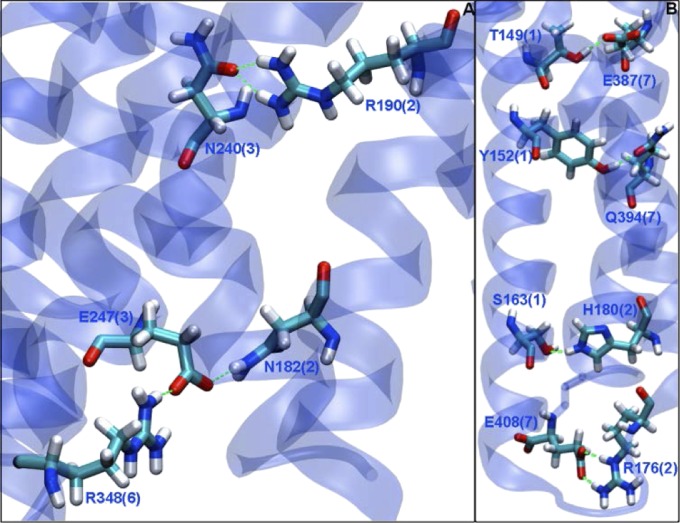Fig. 2.
The (A) TM2-TM3-TM6 and (B) TM1-TM2-TM7 conserved hydrogen bond networks. (A) We believe that the E247(TM3)-R348(TM6) ionic lock may be associated with the unactivated GPCR structure (analogous to the R3.50-D/E6.30 interaction in class A GPCRs). TM3 is additionally coupled to TM2 through the conserved N182(TM2) to form a 2-3-6 interaction. This interaction is further stabilized by the R190(TM2)-N240(TM3) hydrogen bond, which may be analogous to the TM2.45(S/N/T)-3.42(S/N/T)-4.50(W) conserved interaction of class A GPCRs. (B) We also see several more transient couplings between TM1, -2, and -7, which are shown here. These four interactions help solidify the local structure of TMs 1, 2, and 7, and their disruption may be involved in activation.

